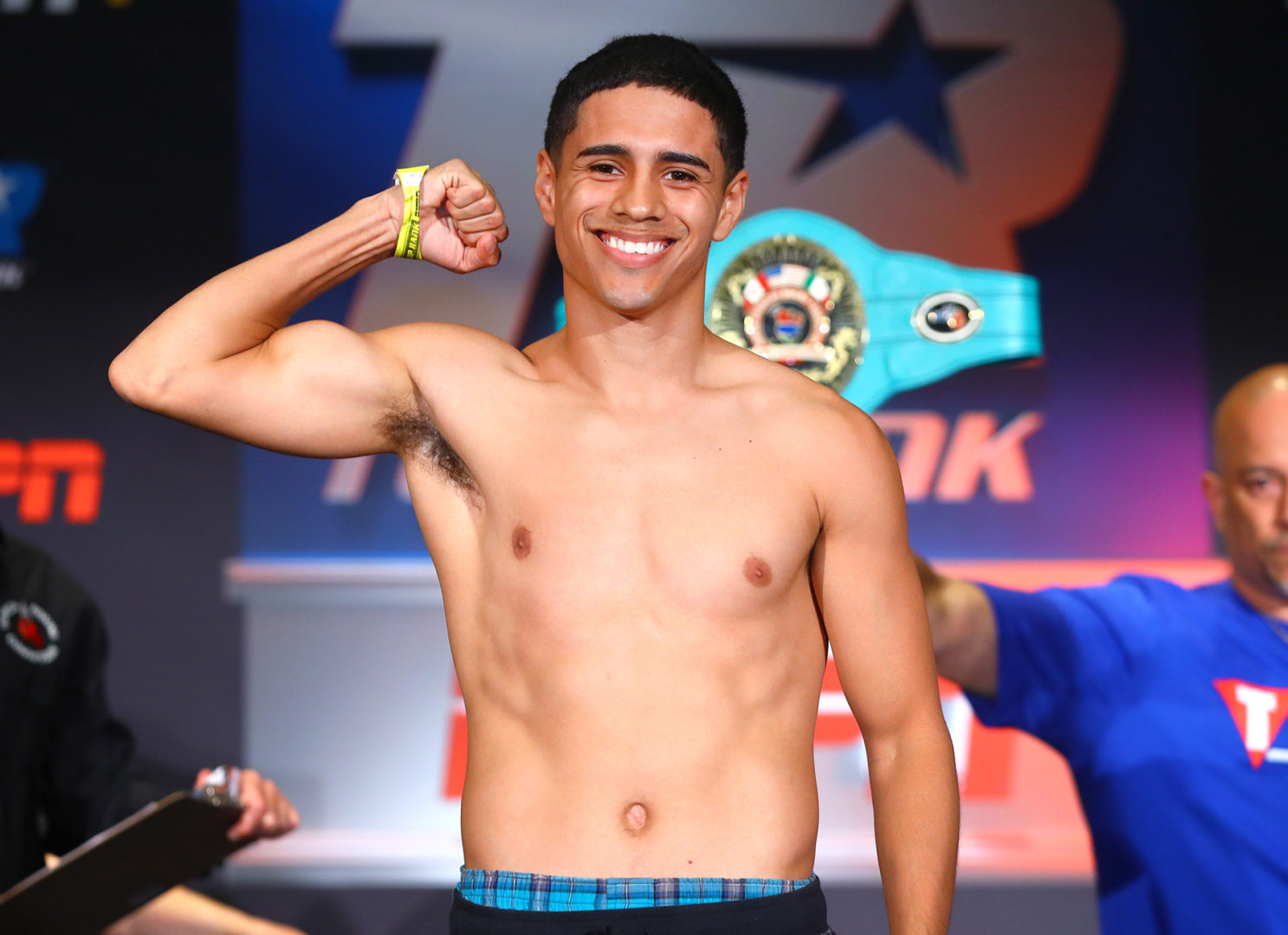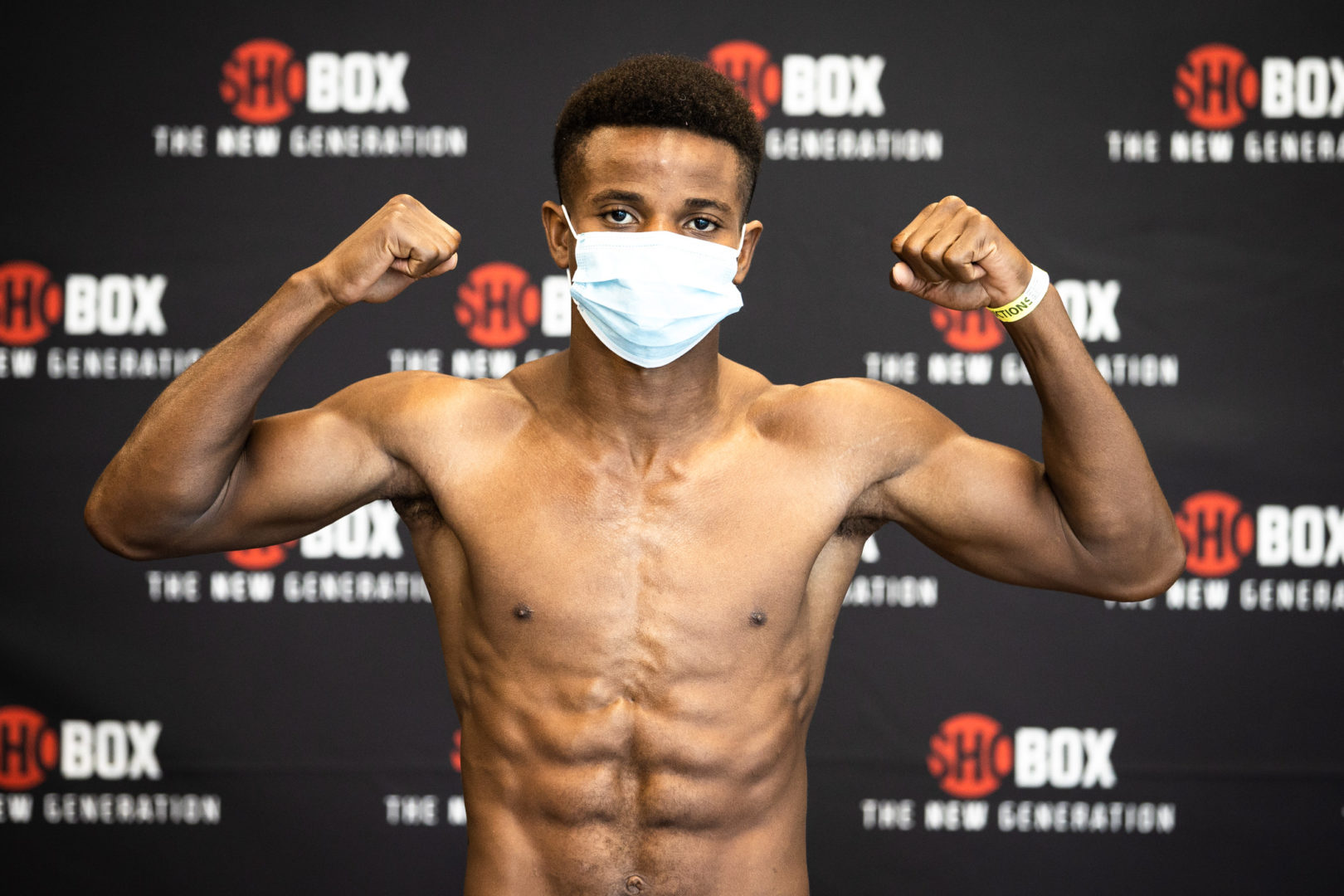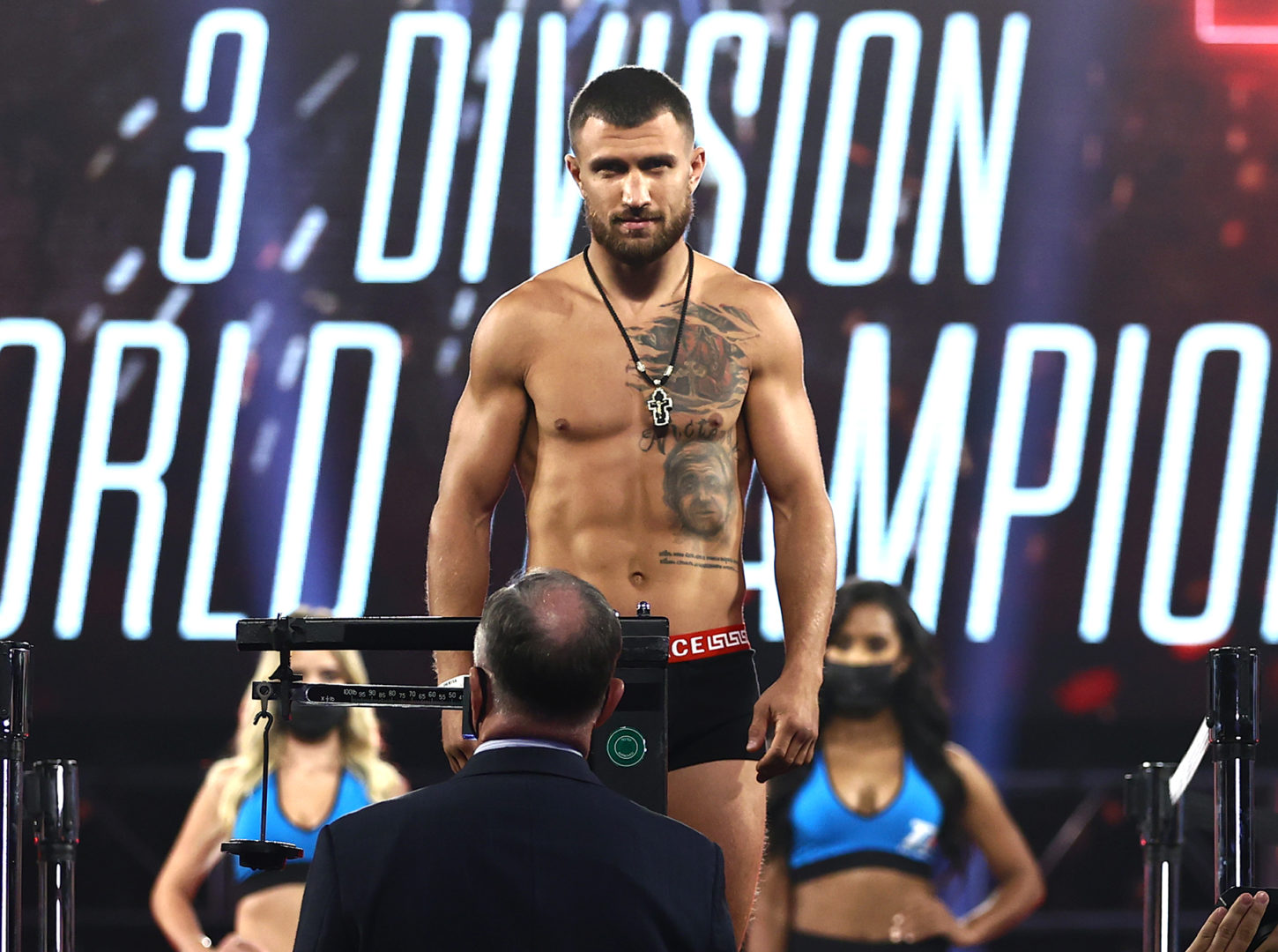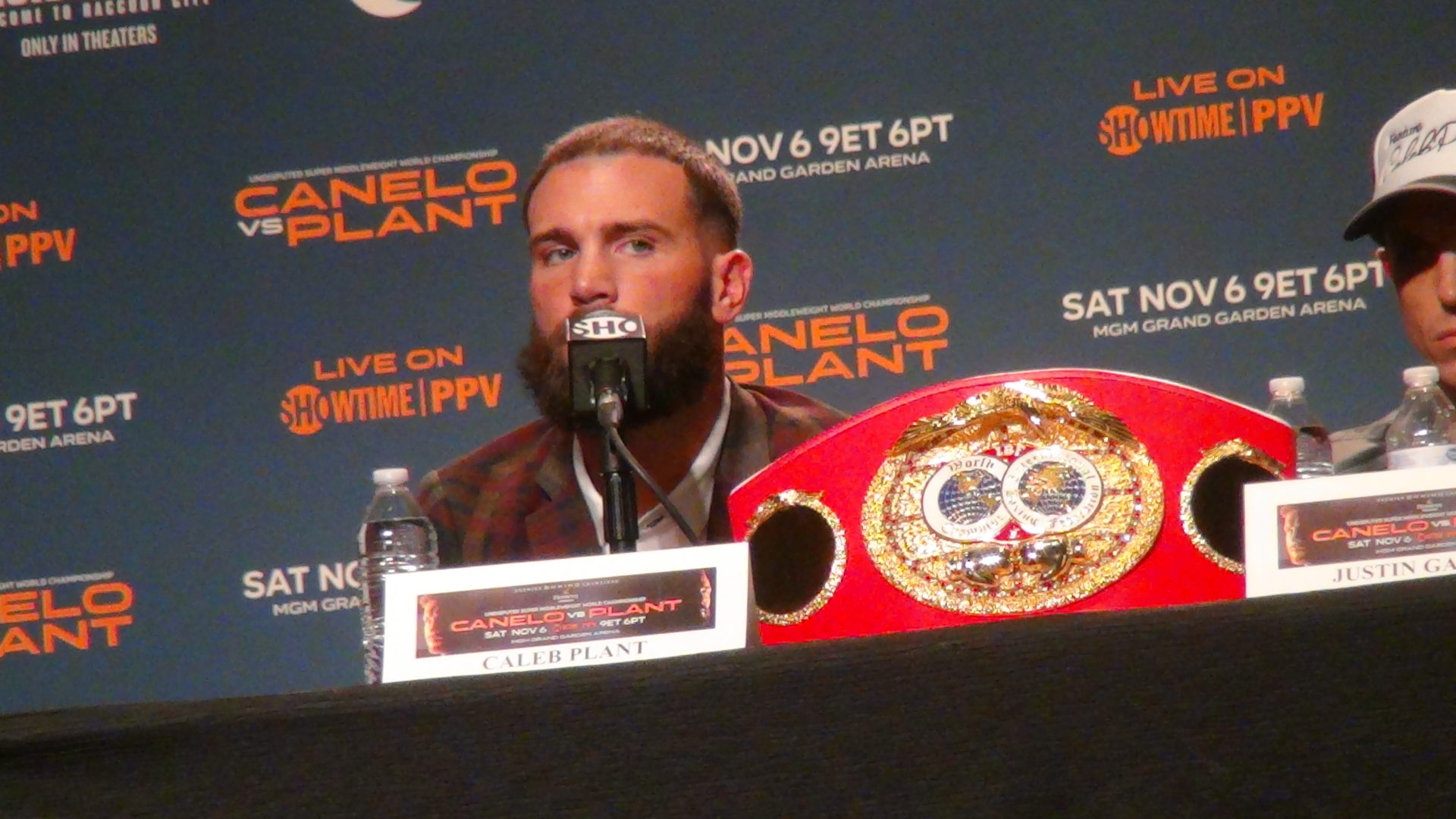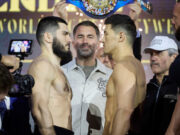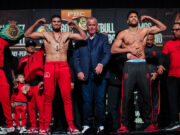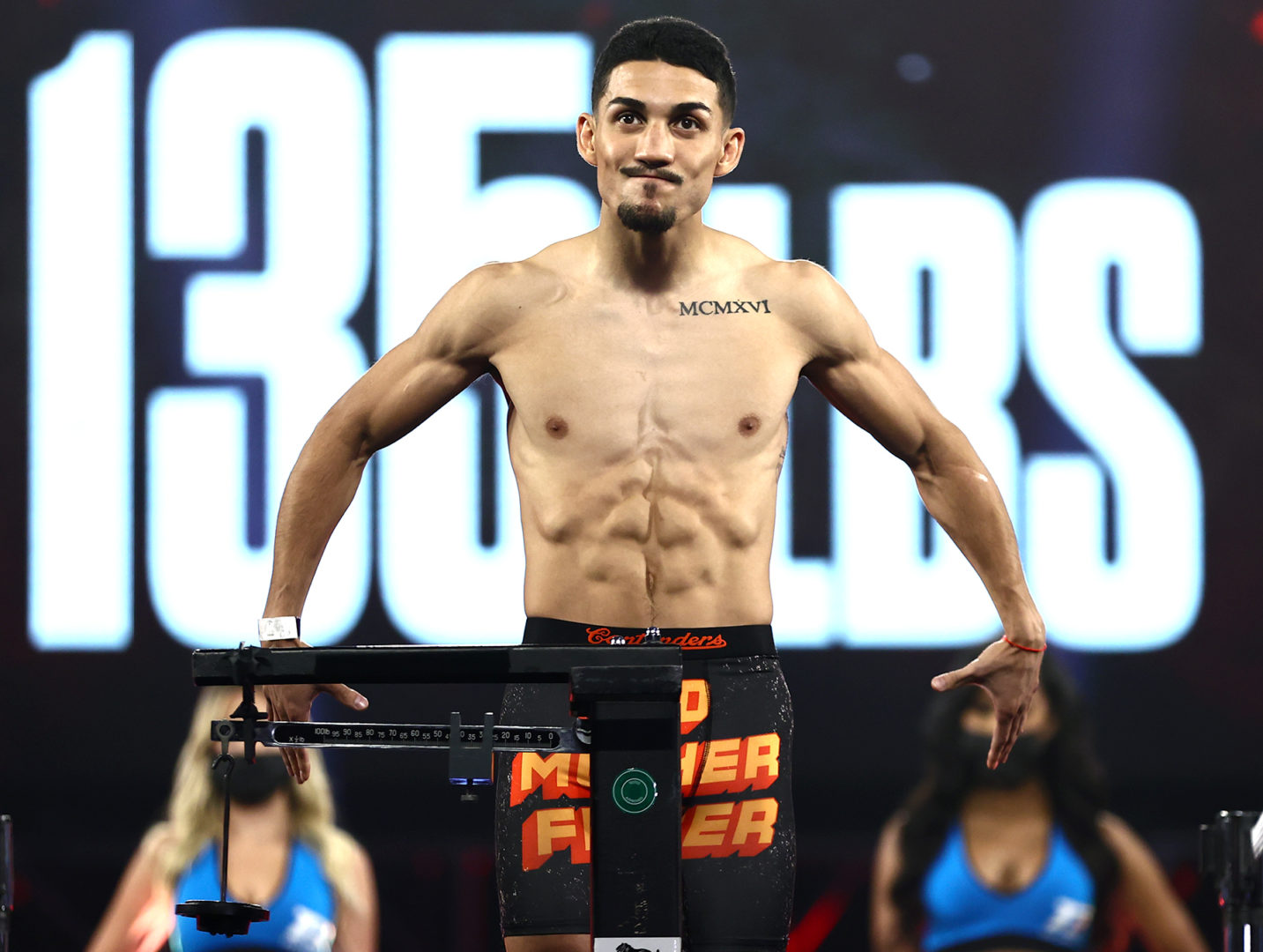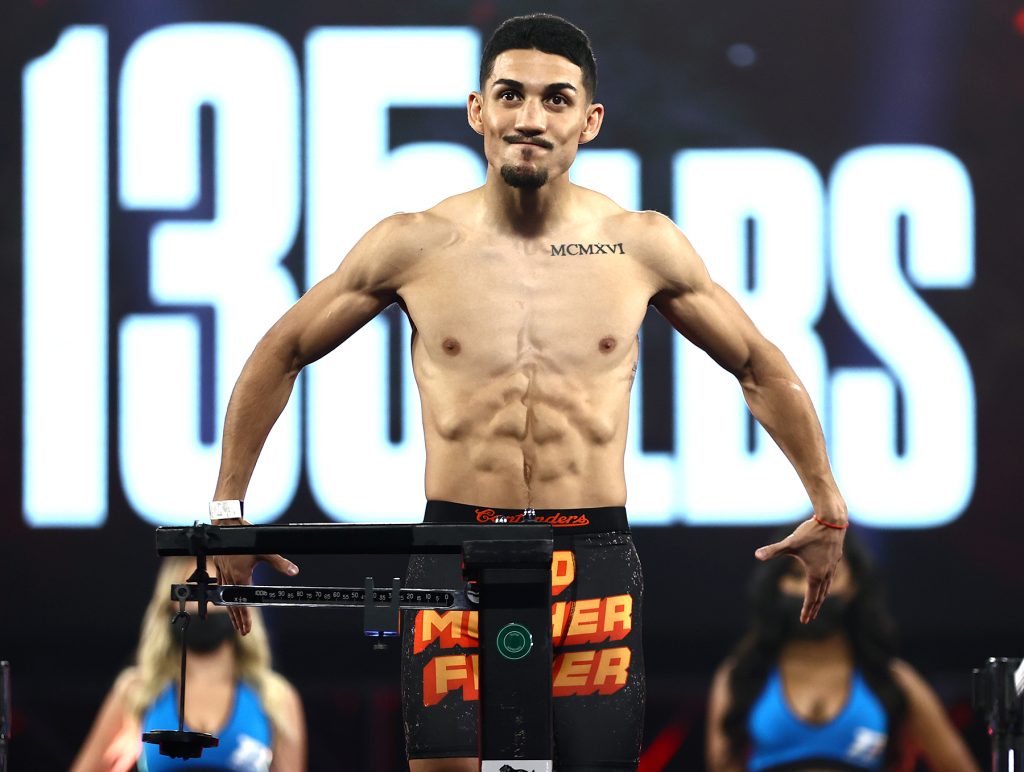
By Bart Barry-
Saturday in The Bubble in the long-anticipated mainevent of a long ESPN card Brooklyn’s Teofimo Lopez conclusively decisioned Ukrainian Vasyl Lomachenko to become The Ring’s lightweight champion. The fight went nearly opposite most forecasts, with Lopez, the better boxer, building an insurmountable points lead, and Lomachenko, the dirty desperado, trying for a knockout with almost every punch he threw – all 10 of them.
More Taylor-Hopkins than Pavlik-Taylor, Saturday’s fight was a tale of auto-overestimation that began with Lomachenko’s overestimating his defense in rounds 1-6 then his power in rounds 7-11 then his conditioning in round 12. Not till after the match did Lomachenko flash some of his trademark contempt, replacing with scorn for the result what looks of concern for himself, confusion, discomfort and unpleasant surprise he’d worn for the preceding hour.
How much did Lopez do to create those looks? Lots and lots. He had Lomachenko’s number from the opening bell and knew it. Lomachenko knew, too, even if he didn’t believe it.
There were moments in the fifth and sixth rounds when it became obvious Lomachenko expected judges to score his reputation, and it set one to thinking: He’s only got 15 prizefights, not 150, so what reputation does he expect them to score? Judge Julie Lederman saw Lomachenko’s resume as balderdash and scored only what she saw, 109-119, in a refreshing manifestation of beginner’s mind; if you didn’t know Lomachenko’s skills are otherworldly and born of traditional Ukrainian dance, etcetera and etcetera, what you scored was a smaller man feinting and twitching and leaping away, for 15 minutes of what had been billed as a superfight, not fighting at all, in other words, and somehow expecting the two punches he landed every other round to even things up.
Whatever Papachenko’s grand strategy be, his son fought like they lost track of the round count, like they didn’t realize they were outside the math of the match till they were way outside it. There were moments in rounds 10 and 11 when it appeared Lomachenko’s strategy hadn’t been to win a decision at all but stop the youngster, which mightn’t have been a bad strategy had Lomachenko done anything more than interrupt his opening 28-minute dance recital with occasional headbutting.
No, Lopez hadn’t any idea how far out his depth he was when he signed the fight, and Lomachenko did nothing to show him in the match’s opening half, either, allowing Lopez’s youthful cocksureness to grow and grow. By the time Lomachenko began to begin scoring points Lopez knew nothing but his being knocked-out should keep the belts round Lomachenko’s waist, and Lopez had long since mitigated what otherworldly angles Lomachenko flashes at smaller men.
It was all in Lopez’s leftfoot backward step. Howsoever much Lomachenko valued his career’s 15 fights more than Lopez’s 14 what Lomachenko saw Lopez do to Richard Commey in December made a hell of an impression and Lomachenko wanted sample none of Lopez’s power, which meant Lopez, not Lomachenko, applied the pressure when no one was punching. Fear of Lopez’s power stripped Lomachenko of his creativity, ensuring Lopez might only be hit by a punch he saw coming, and the quick backwards step Lopez made over and over with his lead foot, choosing to move with Lomachenko, not against him, reduced Lomachenko’s offensive arsenal to its square root.
There were flashes of Juan Manuel Marquez in Lopez’s choice; everyone who ever stepped at Manny Pacquiao got spun round and wacked, including Marquez in his first three minutes with the Filipino. After getting felled thrice Marquez eventually solved the riddle by mirroring Pacquiao and spinning out his lead foot every time Pacquiao readied to attack; Marquez was willing to be hit and hurt by Pacquiao’s 1-2, but he’d be damned if he was going to get spun into Pacquiao’s third and fourth punches.
Lopez’s footwork, although not born in the ballrooms of Kiev, neutralized Lomachenko completely. There were issues of Lopez’s simple width, too, and Lomachenko’s wariness, but it was most telling Lomachenko’s very few rallies happened when Lopez found himself on the ropes and hadn’t access to the one-step retreat he’d obviously practiced and practiced.
Then there was the decisive round, the reason this match will be remembered as Lopez’s coronation and not for its scorecards. After imposing himself in round 11 Lomachenko prepared for Lopez to wilt in the 12th. Wilt he didn’t. Lopez snatched the initiative from Lomachenko and had his best moments in the match’s most important moments. This was where Lomachenko’s auto-overestimation shone through. Lomachenko put his foot down in the final minutes of the fight and found he didn’t have the power he expected – because his defense hadn’t been great as he believed in the opening half, and he’d been hit plenty – he didn’t have the target he expected – because his offense hadn’t been great as he believed, and Lopez was still strong – and he didn’t have the advantage in conditioning he expected because thinking you can apply psychological pressure to a fearless opponent is futile and dumb.
Lomachenko did just enough in rounds 8-11 for aficionados to content ourselves Lopez won, Lomachenko didn’t lose, and embrace the 23-year-old as our new savior, even if the most-feared puncher since Roberto Duran never so much as wobbled the computer nerd across from him. OK, so maybe some of this was overhyped. Welcome to boxing.
Here’s what wasn’t: Both guys subjected themselves to the crucible of highest competition much earlier than they had to, much earlier than their promoter even wanted them to, much earlier than their peers have done. Lopez is right to revel in his accomplishment and publicly ridicule the gradually exiting generation of businessmen whose fears of loss and humiliation ever hid behind promotional conflicts and network loyalties. That ruse held up only so long as everyone went along with it. Lopez put paid to all that Saturday – even if Bud and The Truth don’t know it yet.
Bart Barry can be reached via Twitter @bartbarry



